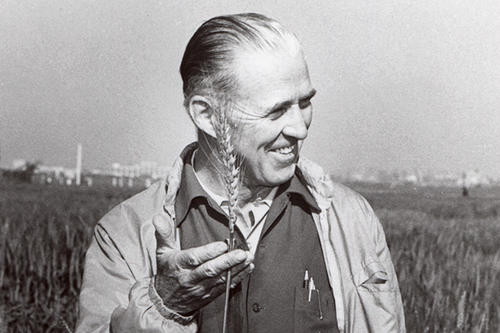
University of Minnesota alumnus Norman Borlaug left an indelible mark on the world. The late agronomist’s work in developing new varieties of wheat starting in the 1940s spawned the “Green Revolution,” and is credited with saving at least a billion lives.
For his unparalleled contributions in using science to feed the world, Borlaug was awarded the Nobel Peace Prize in 1970, the Presidential Medal of Freedom (1977), the Public Welfare Medal (2002) by the National Academy of Sciences, the National Medal of Science (2005), and the Congressional Gold Medal (2007). In 2014 a statue of him was placed in the National Statuary Hall of the United States Congress; he is the sole scientist represented there.
Borlaug also received more than 50 honorary degrees, was inducted into the collegiate National Wrestling Hall of Fame, and helped introduce Little League baseball in Mexico. And just last month, at the “9 Billion and Counting” conference on campus, he was lauded as being “the single greatest graduate of a land-grant institution.”
Beyond all the accolades, Borlaug was a plant pathologist/breeder, a teacher of scientists, a scientific collaborator, and a team builder. His unique teaching and training methods for young scientists became part of the template for a series of global crop improvement centers that undergird the world’s food supply to this day.
Read more about this legend in agriculture, including his research that led to the Green Revolution and his many honors and awards.
- Categories:
- Agriculture and Environment





